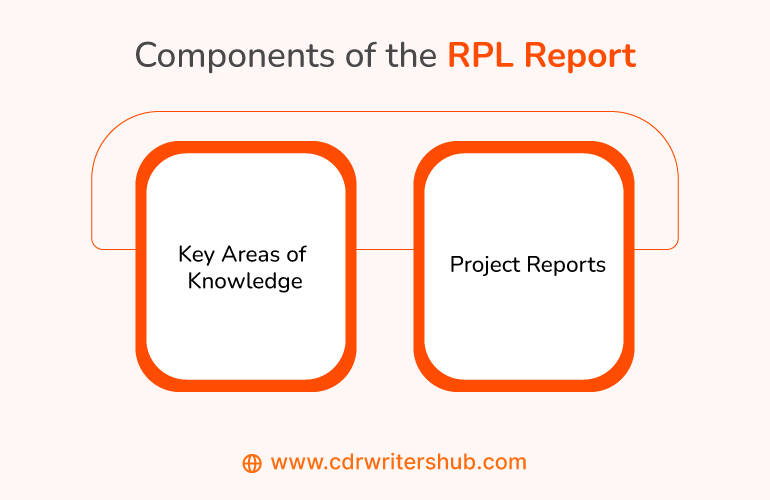How to write a complete RPL for ACS skills assessment?

How to write a complete RPL for ACS skills assessment?
The ACS skills assessment is a vital part of the journey for IT experts planning to move to Australia. The Recognition of Prior Learning (RPL) report plays a significant role in this assessment. The RPL report is a way for individuals who need ICT qualifications or limited ICT experience to demonstrate their skills and capabilities. In this detailed guide, we will take you step by step through creating a successful RPL for ACS skills assessment.
It serves as a bridge for individuals who still need formal ICT qualifications but have gathered experience in ICT-related roles. Through the RPL report, applicants can present a compelling case to ACS, demonstrating that their skills, knowledge, and expertise are on par with those with formal qualifications. This recognition is a significant step towards your goal of migrating to Australia for work or residency.
Components of the RPL Report
Table of Contents
Before diving into the details of how to write a complete RPL report, it’s essential to understand the core components that make up this document. The RPL report consists of two main sections:
1. Key Areas of Knowledge
In this section, you will outline the crucial areas of ICT knowledge that your RPL for ACS skills assessment will address. These areas are the core competencies that ACS is looking for in your skills assessment.
2. Project Reports
The heart of your RPL report lies in the project reports. You will provide detailed information about two projects you’ve worked on. These projects should be tangible evidence of your ICT skills, achievements, and contributions.
Documenting Your RPL for ACS Skills Assessment
Your RPL for ACS skills assessment should be a well-structured, coherent document communicating your skills and knowledge. It must adhere to a specific format that aligns with ACS guidelines.
ACS Skill Assessment Requirements
To have a successful ACS Skill Assessment, you need to meet specific requirements:
- Qualifications: You must have qualifications that are relevant to your nominated occupation. These qualifications should be from recognized institutions.
- Work Experience: You should have relevant work experience in the ICT field. The amount of experience required can vary depending on your qualifications.
- Documentation: You must provide complete and accurate documentation to support your qualifications and work experience claims.
If you are considering the RPL pathway, reviewing RPL assessment samples is helpful. These samples can provide insights into the type of information and documentation you need to include in your RPL report. ACS often provides guidelines and samples on its website to assist applicants in this process.
Like RPL for ACS skills assessment samples, ACS may provide samples of RPL reports on their website. These samples can serve as templates and examples for applicants needing help structuring their RPL reports.
Step-by-step guide for writing a complete RPL Report for ACS Skills Assessment
Here’s a comprehensive step-by-step guide to assist you in writing a complete RPL report for the Australian Computer Society (ACS) skills assessment:
1. Understand ACS Guidelines
The first step is to read and understand the ACS guidelines for RPL. These guidelines provide critical information about the format, requirements, and assessment criteria. Please familiarize yourself with these guidelines, which serve as your roadmap throughout the RPL writing process.
2. Choose Key Areas of Knowledge
ACS has established specific core competencies and critical areas of knowledge that your RPL report must address. Your task is to identify these key areas that align with your experience and expertise. These areas will form the foundation of your RPL report.
3. Research and Understand
Research each key area of knowledge. It would be best if you gained a deep understanding of these areas to discuss them and provide practical examples that prove your expertise. Remember, ACS assessors are looking for practical, real-world applications of your knowledge.
4. Provide Practical Examples
In your RPL for ACS skills assessment, the key is to offer practical examples for each identified vital area of knowledge. These examples illustrate how you’ve applied your skills and knowledge in actual work situations. Be specific and detailed in your descriptions, ensuring that you address the assessment criteria.
5. Select and Describe Projects
The heart of your RPL report lies in selecting and describing two projects from your work experience that best showcase your ICT skills. Candidates must choose projects that align with the critical areas of knowledge you’ve identified. Provide comprehensive descriptions of these projects, including their objectives, scope, challenges faced, and how you overcame them.
6. Detail About Your Role and Achievements
Provide a clear and comprehensive account of your role and responsibilities within each project. Emphasize your achievements and contributions to the success of the project. Establish a strong connection between your role and the critical areas of knowledge you’re addressing. Use action verbs to describe your contributions.
7. Proofread, Review, and Submit
Before finalizing your RPL for the ACS skills assessment, it is imperative to proofread it. Look out for grammatical and spelling mistakes, and ensure clarity in your writing. Additionally, review your report against the ACS guidelines to ensure it aligns. Once you are confident in the quality and accuracy of your report, submit it according to ACS instructions.
ACS Australia Skill Assessment Process
The ACS Skill Assessment process involves several steps:
- Eligibility Check: Conducting an eligibility check on the ACS website before you start your application is a good idea. This eligibility check can give you an initial idea of whether you meet the requirements for your chosen occupation.
- Create MyACS Account: To begin the application process, you must create an account on the MyACS portal.
- Lodge Your Application: Once you’ve created your MyACS account, you can start your application. You’ll need to provide details about your qualifications, work experience, and other relevant information.
- Submit Documents: Depending on your circumstances and the occupation you’re applying for, you may need to submit various documents, such as transcripts, CVs, and reference letters.
- Assessment: After you’ve submitted your application and all required documents, ACS assessors will review your qualifications and work experience.
- Outcome: You’ll receive an outcome for your assessment. If it’s positive, it means your qualifications and experience meet the ACS requirements for your nominated occupation. If it’s negative, ACS will provide reasons for the decision.
Tips for Writing an RPL for ACS Skills Assessment
Writing an RPL for ACS skills assessment that showcases your skills and knowledge can be challenging, but here are some more tips to help you excel in this task:
- Be Honest and Accurate: Honesty is vital in your RPL for ACS skills assessment. Be truthful about your skills, knowledge, and experience. Avoid exaggeration or false claims.
- Use Clear and Concise Language: Avoid using technical jargon that might not be familiar to the assessors. Use clear and concise language to communicate your practical ideas.
- Provide Concrete Evidence: Back up your claims with solid evidence. Include documentation, diagrams, project reports, and other materials supporting your assertions. Evidence strengthens your case.
- Focus on Showcasing Skills: The primary goal of your RPL report is to showcase your skills and knowledge. Ensure that every aspect of your report serves this purpose.
- Seek Professional Guidance: If you require more clarification on any aspect of the process or believe you could benefit from professional help, consider seeking guidance from experts specializing in ACS skills assessments.
- Review and Refine: Take the time to review and refine your RPL report many times. Fresh eyes can catch errors or areas that need improvement.
- Follow ACS Guidelines: Adhering to ACS guidelines is crucial. Please do so to avoid your RPL report getting rejected or assessed negatively.
Why Choose Us?
We know how crucial a successful ACS skills assessment is and understand the challenges of creating a convincing RPL for ACS skills assessment. Our experienced professionals are here to support you every step of the way as you write your RPL. With our guidance, you can present your skills, knowledge, and expertise to ACS assessors, improving your chances of a positive assessment result. We offer comprehensive help customized to your unique needs.
Conclusion
To sum it up, the RPL report is a vital part of the ACS skills assessment process, especially for individuals who lack formal ICT qualifications but have industry experience. By adhering to ACS guidelines, identifying the relevant areas of knowledge, providing practical examples, and giving detailed descriptions of your projects and achievements, you can create a thorough RPL report that showcases your ICT expertise.
Remember to review and submit your report, and feel free to seek professional help if you have any doubts about the process. With a well-prepared and persuasive RPL for ACS skills assessment, you’re taking a significant step toward achieving your migration goals in Australia and highlighting your valuable contributions to the ICT field.



